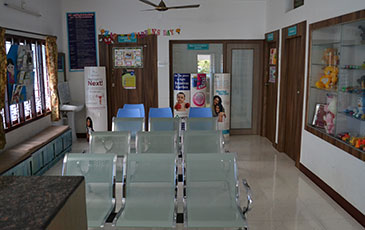Introduction: ADHD is a disorder that manifests in young children with symptoms of difficulty staying focused and paying attention and hyperactivity. This article focuses on giving a general idea about the symptoms, diagnosis and treatment for ADHD. There is relatively little recognition of Attention Deficit Hyperactivity Disorder (ADHD) in India. Children with ADHD are often not diagnosed properly in India or if diagnosed they are not appropriatly treated.
- Types of ADHD
- Predominantly hyperactive-impulsive type:
- Predominantly inattentive type
- Combined hyperactive-impulsive and inattentive type.
Signs and Symptoms: The symptoms of ADHD can be put under there major categories.
- Hyperactivity
- Excessive Fidgetiness
- Talks nonstop
- Difficult remaining seated
- Be in constant motion – always “on the go”
- Difficulty playing quietly
- Impulsivity
- Difficulty waiting for their turns
- Be very impatient
- Disrupts classroom
- Blurting out inappropriate comments
- Interrupting others activities.
- Inattention
- Easily distracted
- Difficulty focusing
- Forgetfulness
- Misplacing things
- Disorganization
- Trouble completing homework and poor academic underachievement
- Poor attention to details
- Not listening when spoken toDifficulty in following instructions
Criteria to Diagnosis ADHD: Most normal children get distracted, act impulsively and have problem with concentration at some time or another. These normal features of kids should not be mistaken for ADHD.
If your child has symptoms of ADHD as mentioned above then it is advised to see your pediatrician, who will evaluate your child and would use the following criteria to diagnose ADHD.
- Six or more symptoms of Inattention, Hyperactivity or Impulsivity symptoms must have persisted for at least 6 months.
- Symptoms must be present in more than one setting (School, home etc)
- Symptoms must be present before the age of seven years.
- Symptoms must impair function in academic, social, or occupational activities.
- Symptoms must be excessive for the developmental level of the child.
- Other disorder that could account for the symptoms must be excluded.
- Conditions Resembling ADHD
- Hearing or Eye problems
- Learning disabilities
- Depression
- Anxiety disorder
- Seizure disorder
- Thyroid disorder
Treatment for ADHD: Treatments that are currently available for ADHD can only reduce the symptoms or ADHD and improve their functioning.
Medications: “Stimulant” medications are used for treating ADHD, although it might sound paradoxical to use a stimulant medication to treat a hyperactive condition. These medications actually have a calming effect on these kids. Some of the ADHD medications available in India are as follows
- Methylphenidate (ADDWIZE, INSPIRAL etc)
- Nonstimulant medication: Atomoxetine hydrochlored (ATTENTROL, AXEPTA)
ADHD medications help improve the symptoms, but the right dose varies from one child to another, so it might take multiple visits and dose adjustments before your doctor figures out the right dose for your child.
Side Effects: Some of the side effects of stimulant medications are decreased appetite, weight loss, sleeplessness and irritability. Less commonly children on stimulant medications can develop tics, but these usually disappear with dose modification.
Counseling: Children with ADHD can benefit from behavior modification therapy by practicing token reward systems for good behavior and timeouts for bad behaviors. Some of the practical techniques that can be followed are
- Keeping the rules clear and brief.
- Decreasing distractions as possible.
- Setting small and practical goals daily and using checklists to keep up the goals
- Following a daily schedule
- Encouraging activities, that the child is more interested.
- Following regular breaks during long tasks that require attention.
- Give immediate positive feedback and reward positive behavior
- Show your child lots of affection.
- Never punish you kid- can practice timeout for bad behaviors.
- Talk to your child’s teachers and support their efforts to help your child in the classroom. Make sure they closely monitor your child and provide positive feedback and be flexible.
Long Term: About half of the children with ADHD continue to have symptoms as adults.




